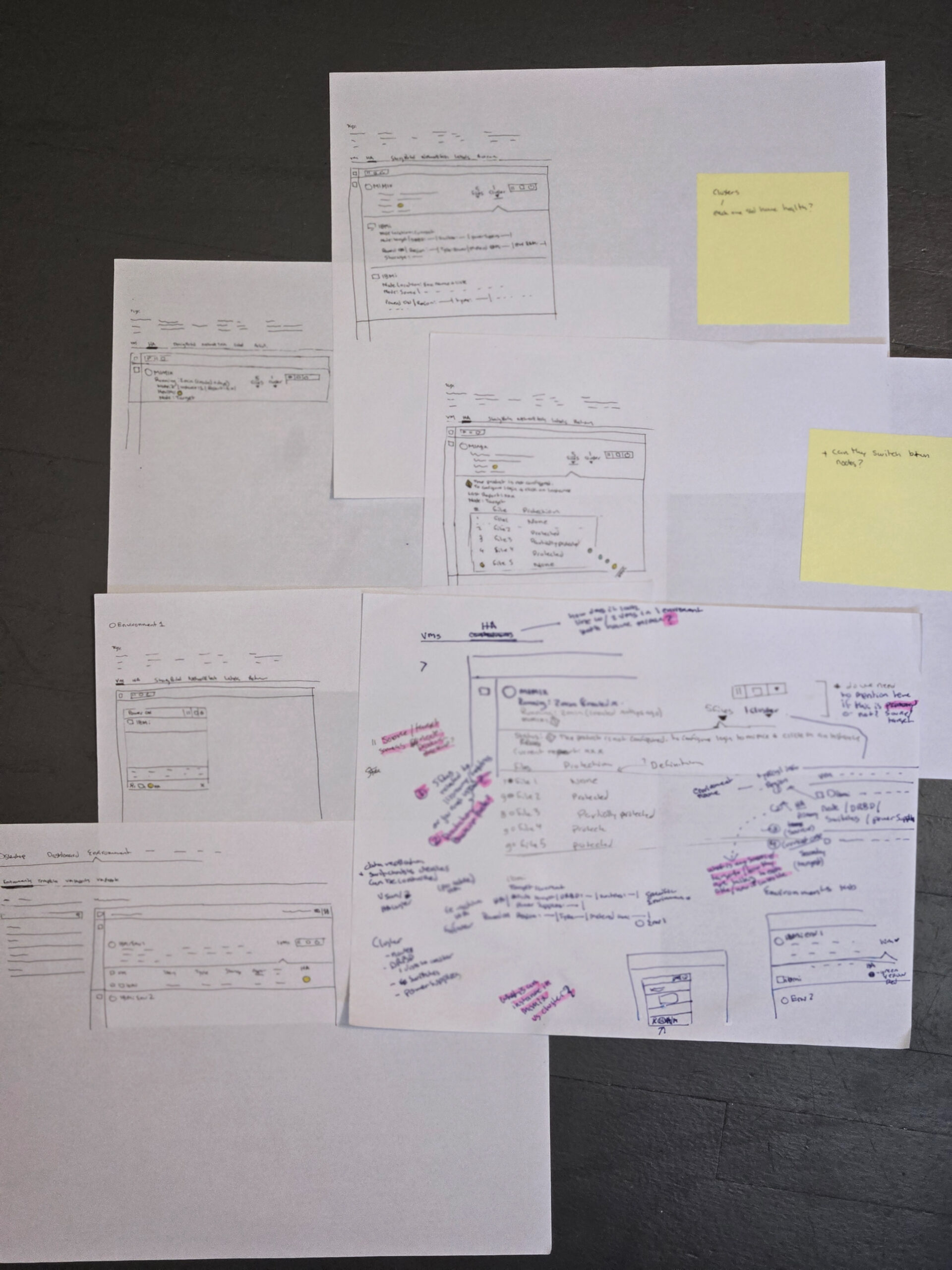How a UX-Led Approach Paved the Way for a Strategic Partnership
The possibility of a partnership between two leading technology providers was exciting—but uncertain. On paper, the integration of a high-availability solution into our cloud services platform seemed like a powerful idea. But the technical feasibility, user experience, and value proposition were all unknowns. If the two systems couldn’t be aligned or visualized clearly, the partnership might never materialize.
Conflict
Both companies faced a difficult question: could their systems work together seamlessly? Stakeholders needed to understand how this integration would function in real-world scenarios before committing to the partnership. I needed to create something tangible to guide technical discussions and discover a shared vision.
The Journey
As the lead product designer and UX lead, my role was to turn abstract technical ideas into something concrete. This wasn’t just about design; it was about creating a tool for conversation. I began by mapping the user flows for each system identifying potential pain points and areas of alignment. Each iteration of the prototype brought new insights: workflows and collaboration with engineers uncovered hidden technical challenges.
With each step, the prototype evolved—not into a final solution, but into a visualization that bridged the gap between our technical teams and decision-makers. It wasn’t easy. There were times when we had to completely rethink how certain features could be integrated. But those challenges only strengthened the prototype and, by extension, the partnership discussions.

The Resolution
In the end, the prototype accomplished exactly what it was designed to do: it facilitated a clear and productive conversation. Decision-makers could finally see the potential of the partnership. They were no longer discussing abstract concepts but engaging with a viable solution that demonstrated the value to users and the feasibility from a technical standpoint.
This clarity led to the successful signing of the partnership, but more than that, it built trust between the two companies. What started as a challenging technical question became a shared vision of what was possible—laying the groundwork for a long-term relationship.
Personal Reflection
This project was a powerful reminder of how prototypes and quick sketches can spark conversations that might otherwise be difficult to initiate. It reinforced the importance of involving UX and product designers at every phase of the product lifecycle.
I collaborated closely with key stakeholders from both companies throughout the project, including the Senior Director of Strategic Alliances, solutions architects, product managers, Chief Technology Architect, and engineers. My focus was on understanding the technical and business needs that would define success and ensuring that the integration of the high-availability solution was both feasible and valuable for both parties.
Starting with rough sketches accelerated discussions, making it easier to align on key challenges early on. What began as quick visualizations evolved into low-fidelity prototypes that drove deeper technical conversations, uncovering hidden constraints and opportunities. The ability to move quickly and iteratively played a crucial role in progressing the partnership discussions faster than before UX involvement.